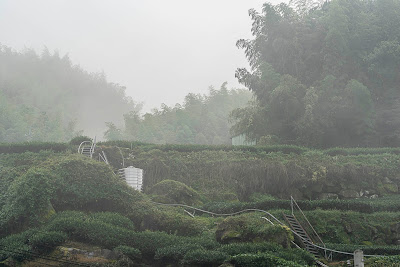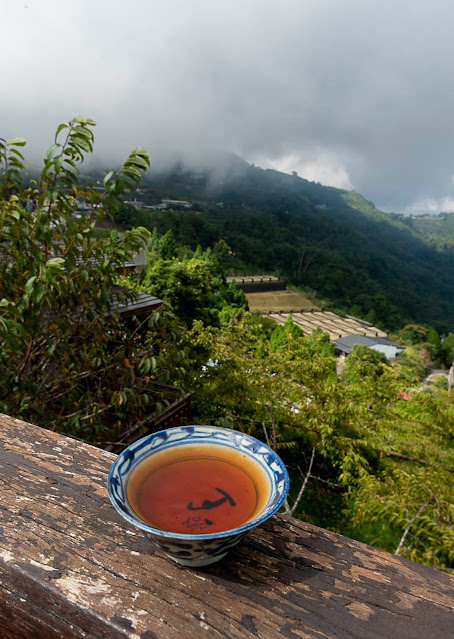A trip to Alishan can be a small affair nowadays if the weather plays along. The roads are quite wide and can even accommodate buses (of tourists). The Japanese were the first to make the trip to these central mountains easy with a railroad built some 100 years ago. That's why Alishan tea bags often feature the red train that is still in operation from Chiayi.

In the summer, a car trip can still turn into a dangerous adventure if you are caught by thick fog that transforms into a deluge of water. When all nature's wrath is pouring on the road, it's best to stop and find refuge somewhere. Here, fate had me and my companions visit of this Wufeng temple in Shizhuo, Alishan.

Wufeng is a Han Chinese who helped civilize the Aborigines in Taiwan. You can read his story and the controversy about him in this article.

This temple is extending a temple that dates back 1867, if my memory is correct. This date is in line with the period of increased settlements of Chinese from Fujian Province. Their arrival is what pushed the Aborigines into the mountains. The settlers would soon follow them there...

Besides us, there was just one tourist from Taipei. At first, he had found a refuge from the noon sun and stayed when the downpour began. Countryside temples are usually quite empty, except on special days in the lunar calendar or if they are part of a monastery.

After half an hour, just as suddenly as it had began, the weather cleared. The tea fields are now gorged with water and cooled down after the morning sun.

While it's more photogenic to take pictures of the plantations under a blue sky, the fog and rain are essential for the freshness of high mountain Oolong. Experiencing the extreme mountain weather also increases my appreciation of the work of these farmers. They are modern Hercules, mere mortals like Wufeng, harnessing the powers of the gods of nature.

Alishan tea is the result of this harmony of men, mountain and high altitude weather.



Love the temple photos.
ReplyDeleteThanks for sharing!